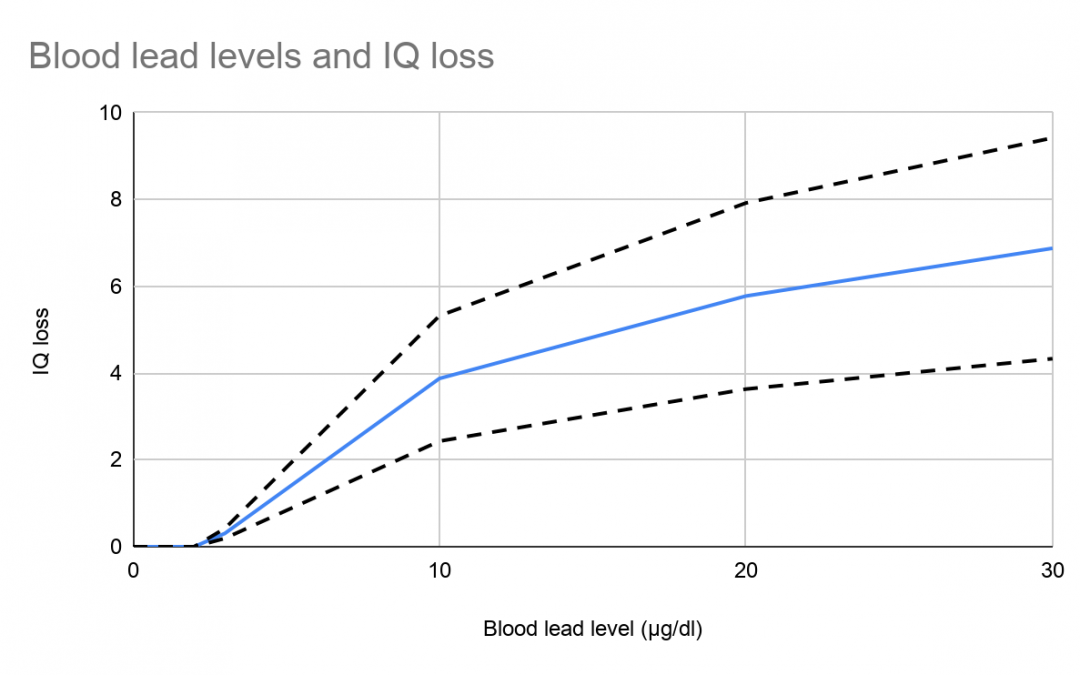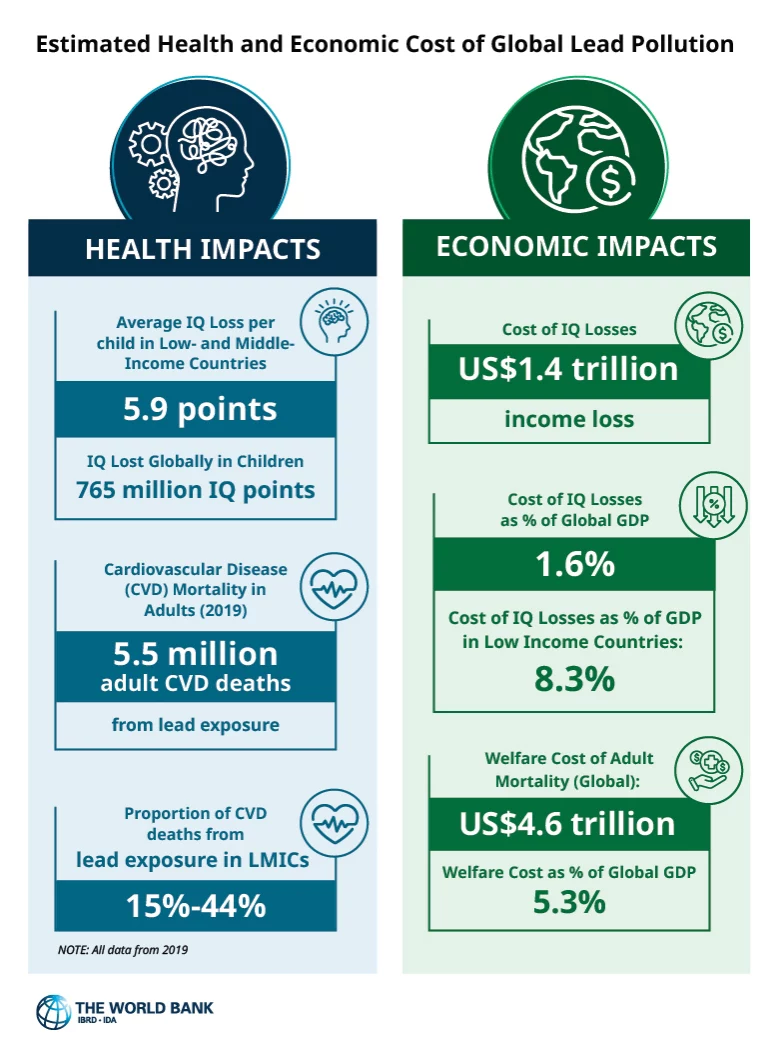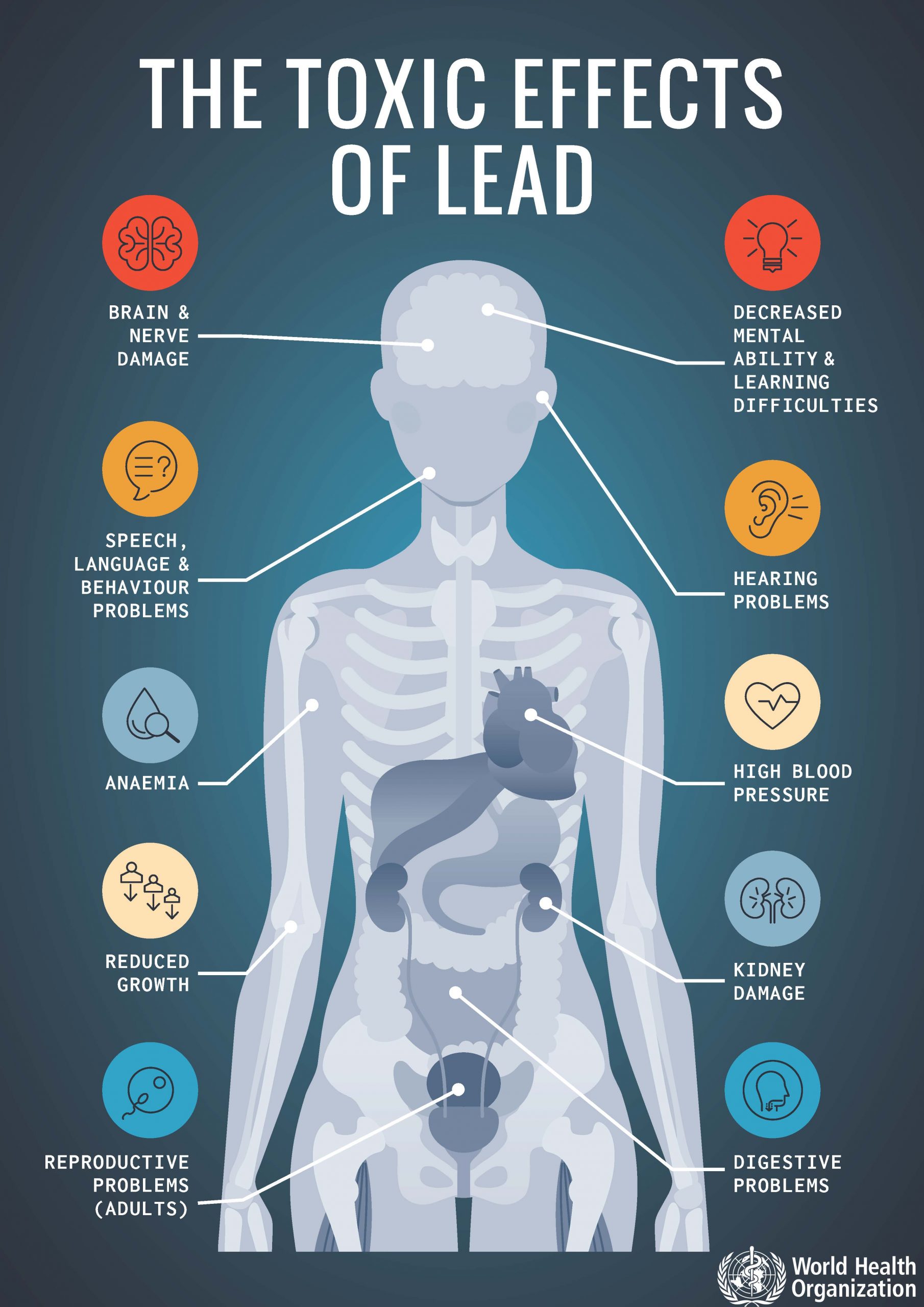Children’s exposure to lead causes 1.5 million deaths every year as well as health impacts, including lower IQs and behavioral problems, which ultimately impact adults’ ability to earn sufficient wages. Lead exposure is tied to US$1.4 trillion in income loss due to lower IQs. However, lead is in more than just paint.
Lead poses a significant danger to children, causing lower IQs, learning difficulties, reduced attention spans and behavioral disorders, which in turn lead to lower educational attainment and consequently lower earnings as adults. Altogether, lead exposure is tied to US$1.4 trillion in income loss due to lower IQs. Multiple studies have calculated IQ decreases and subsequent earning losses due to elevated blood lead levels (BLL).
Lead in various products
Paint is a well-known source of lead exposure in young children, who can ingest paint flakes or gnaw on wood that has been painted. Homes in both the developed and developing world are painted with paint that contains lead, making exposure a global problem.
Drinking water can also be contaminated with lead, due to lead in pipes – lead pipes can be found in Europe, North America, Africa. The environment can become contaminated from lead mining and smelting as well as e-waste processing – old computers, cell phones and other products that contain lead are shipped to low and middle income countries (LMICs) where they are often disassembled in unsafe conditions and without environmental protection measures. Lead can leach into the water supply, contaminating wells and boreholes.
However, other common sources of lead exposure in children are less well known. These include:
-
- cookware and dishes
- cosmetics
- jewelry
- religious powder
An investigation by New York City on the lead content in consumer products found
extraordinarily high levels of lead: cosmetics had almost 180,000 ppm (parts per million), religious powder 76,000 ppm, tableware 53,000 ppm and jewelry had 107,000 ppm.
Many of these products were imported to the U.S. from other countries.
The limit for lead in consumer products in the United States is 90ppm for cookware, jewelry and toys. The lead levels in some products – 100,000 ppm or more – exceed safe limits by staggering amounts.
Cosmetics for babies and young children
Although using cosmetics on children is not common in Western countries, in other places in the world children and even young babies have makeup applied. Eye cosmetics are frequently used; these are black powders that are applied around the eyes to ward off the “evil eye”, “improve eye health” or due to religious and cultural traditions. They go by different names – surma is used in Pakistan, kohl in Morocco and kajal in India, and they are used not just in Asia, the Middle East and North Africa. Religious powders, used by South Asians, can contain high levels of lead.
It is thus important to understand the cultural context and the specifics behind use of certain products in different countries or populations. Immigrants who used these products in their homeland then often buy imported cosmetics, making their use a health issue for their new countries of residence.
Combatting lead exposure
To combat lead exposure, countries need to pro-actively identify sources of lead in their communities and create laws banning lead in those products.
International as well as national organizations and coalitions are already tackling this issue:
The Global Lead Forum is a global platform for knowledge-sharing by a wide variety of actors working on lead exposure, particularly in low- and middle-income countries.
The Lead Exposure Elimination Project (LEEP) helps paint manufacturers in Africa, Asia, Latin America and MENA change their ingredient list to lead-free alternatives and works with governments to support the implementation of lead paint regulations.
Pure Earth prevents exposure to toxic pollutants and protects public health in low- and middle-income countries through global and local collaboration. It works to remove lead contamination sources, helps improve regulatory frameworks, remediates lead hazards, improves the environmental performance of industry, facilitates the adoption of lead substitutes in production processes (e.g., pottery glaze), and increases resources to address lead pollution.



